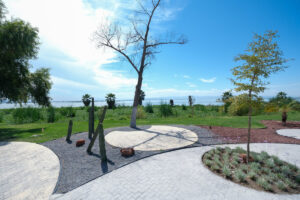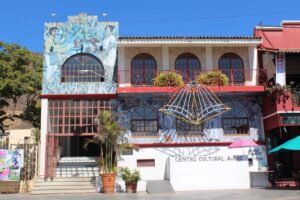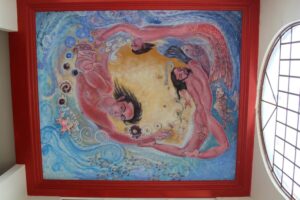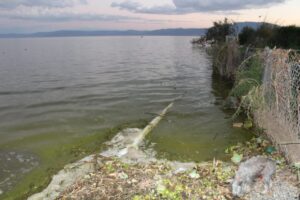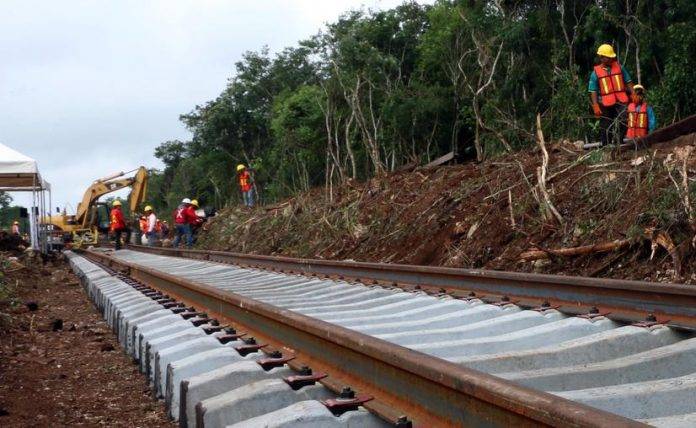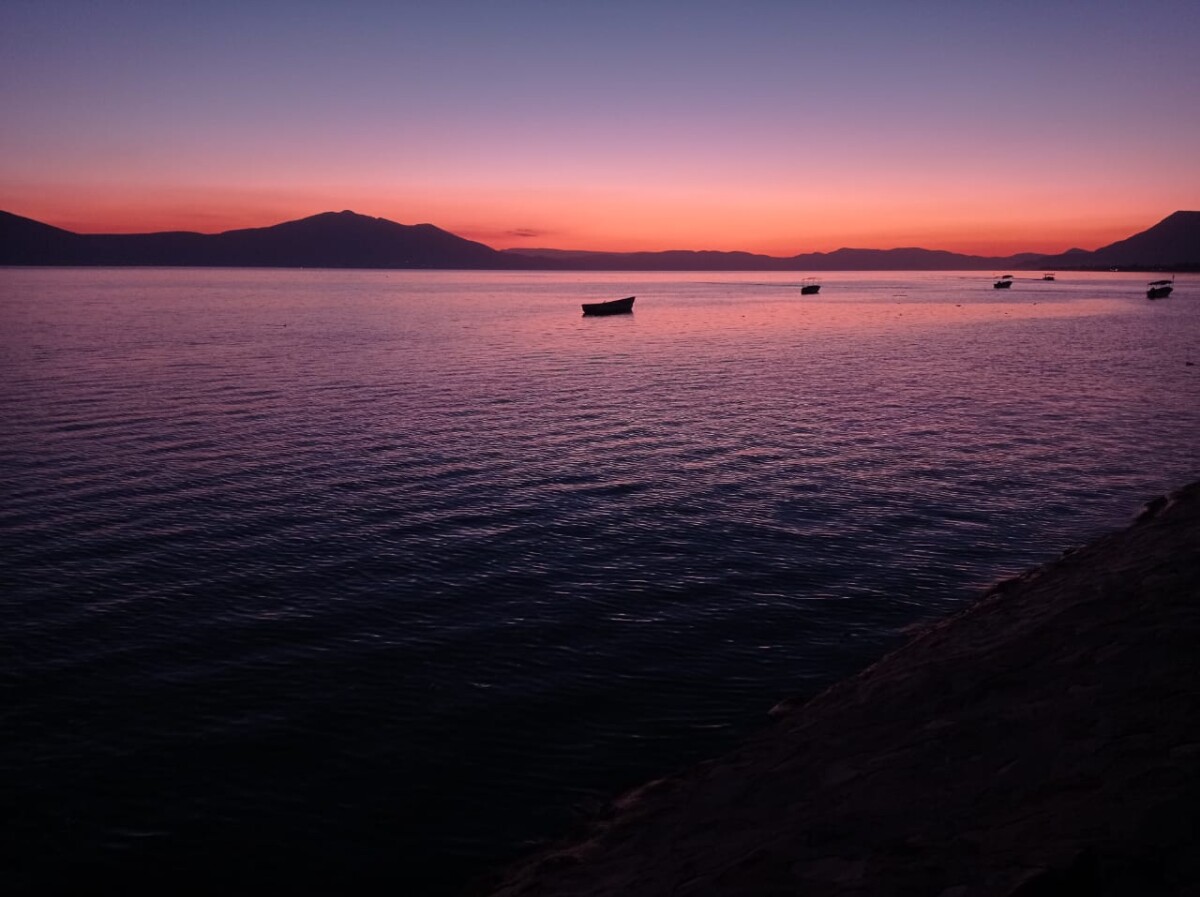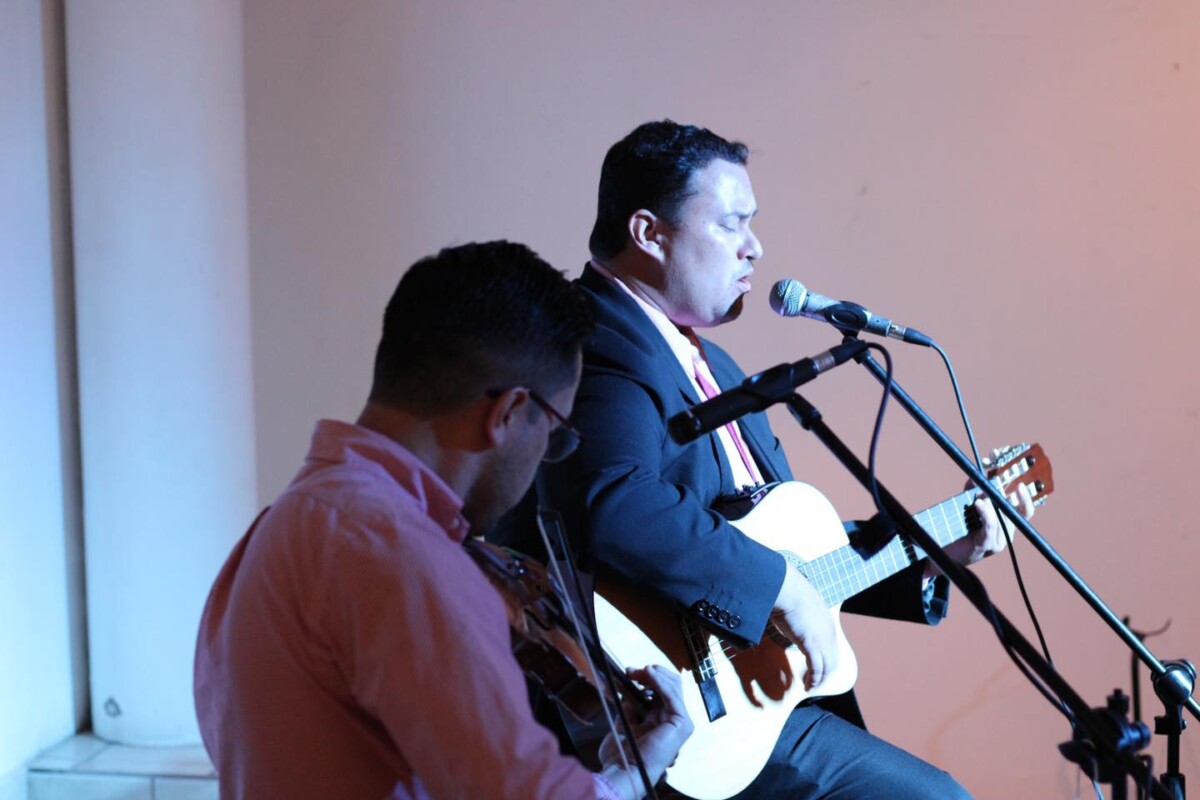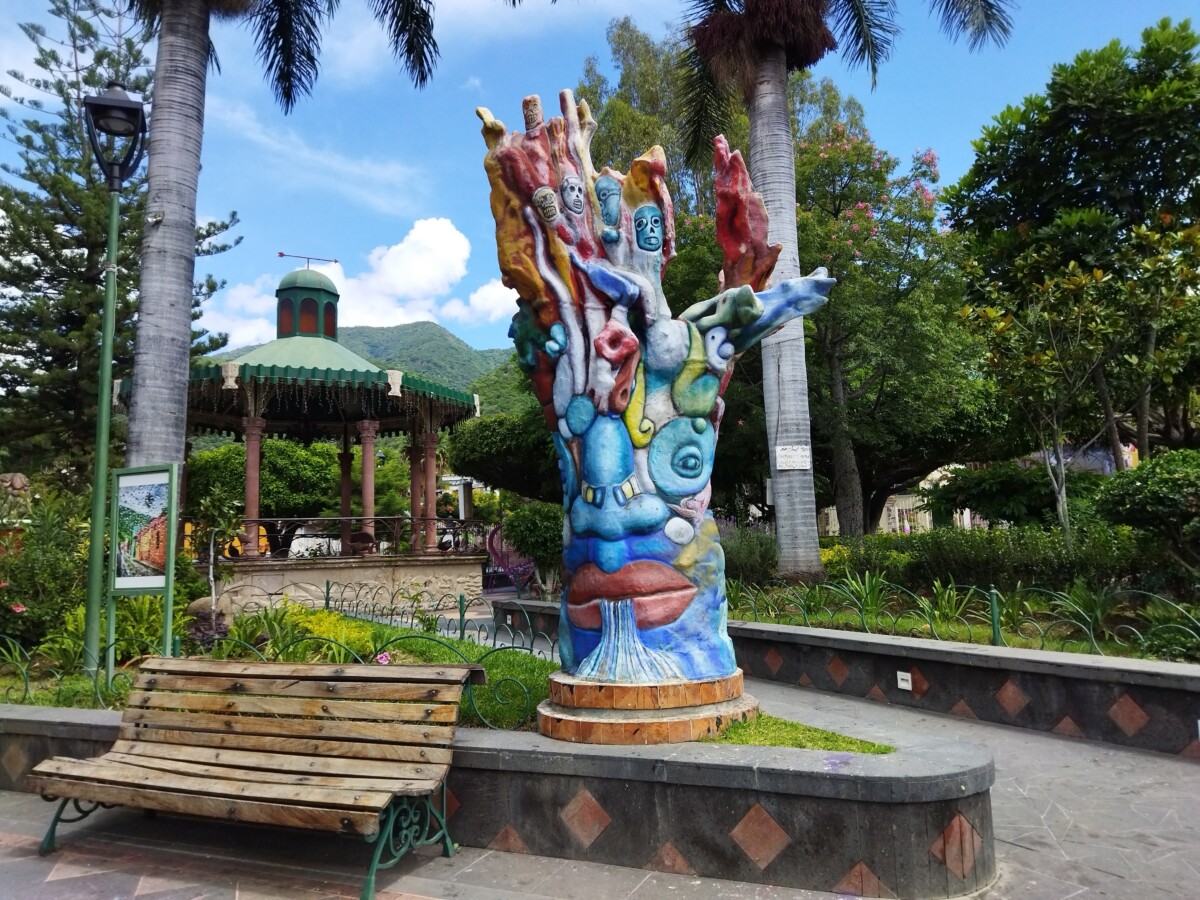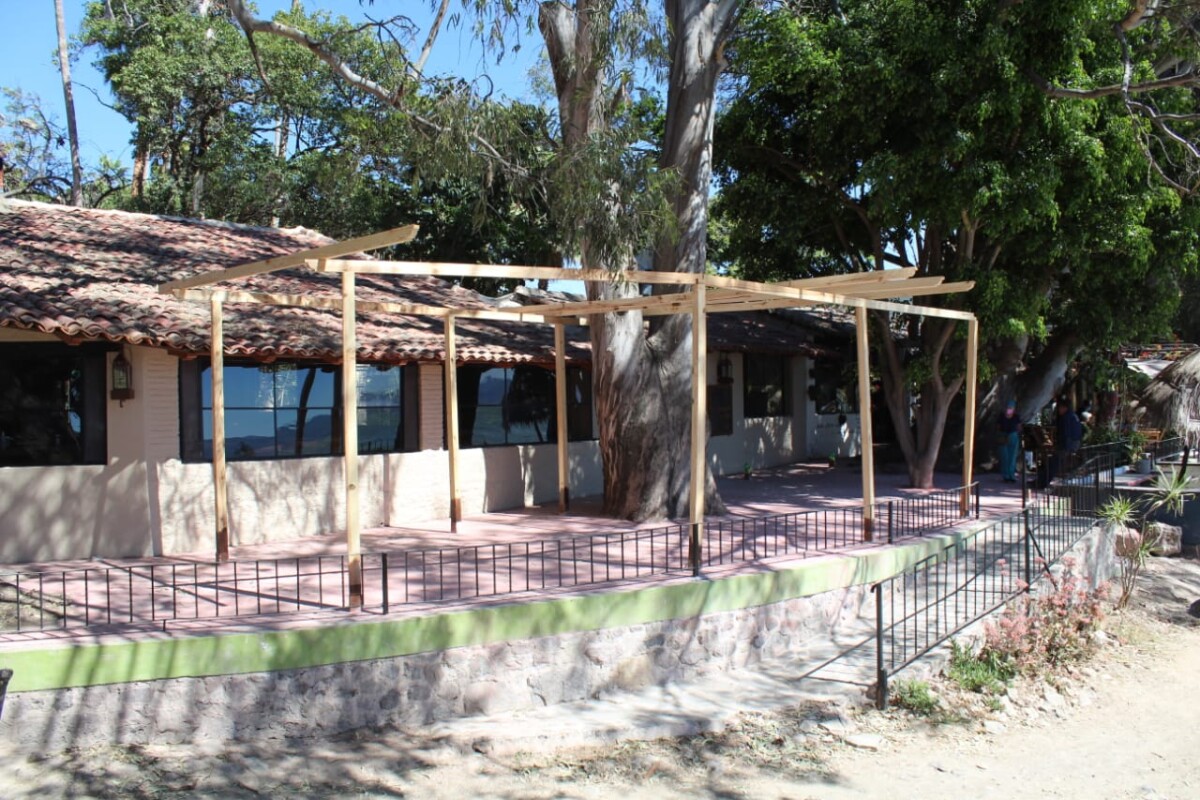Turismo
Entrega Enrique Alfaro el malecón de Jamay
Con el malecón se busca impulsar el desarrollo turístico y comercial de la zona. Foto: Cortesía.
Redacción.- En su gira de trabajo por la Región Ciénega, el pasado 14 de febrero el Gobernador del Estado, Enrique Alfaro Ramírez, entregó el malecón de Jamay que impulsará el desarrollo turístico y comercial de la zona.
Las obras en el malecón consistieron en construir andadores y rellenos, jardineras, pavimentación en concreto hidráulico, estacionamiento, machuelos, expansión de área de muelles e instalación de mobiliario urbano, así como iluminación.
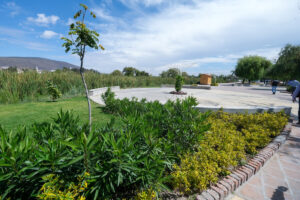
Alfaro Ramírez informó que a través de senadores y diputados federales se gestionará el nombramiento para que Jamay pueda ser Pueblo Mágico.
Este municipio ribereño se encuentra del lado oriente del Lago de Chapala, entre Ocotlán y La Barca.
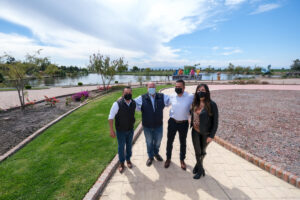
Durante la visita del Gobernador a Jamay, se otorgó también el recurso para iniciar con el equipamiento de la ludoteca Fija de El tren de los Valores, además de un vehículo incluyente que estará al servicio de las personas con discapacidad, para trasladarlas a sus terapias de rehabilitación o consultas médicas en su municipio, o de ser necesario, al Área Metropolitana de Guadalajara. Asimismo se pondrá en ruta una camioneta a disposición del municipio para trasladar a grupos prioritarios.
Deterioration and lack of maintenance at the Cultural Center of Ajijic
Ajijic Cultural Center, located in the delegation’s Main Plaza.
Sofía Medeles (Ajijic).- A lack of maintenance for several years has caused a visible deterioration in the Ajijic Cultural Center (CCA), according to artists Jesús López Vega and Juan Navarro, who have murals in the building.
López Vega, the artist who did «The Birth of Teo-Michin-Cihualli» on the ceiling of the stairs of the Cultural Center, said that, in the 17 years of the mural, it has not been cleaned or retouched, despite being considered a state heritage.
«It was thanks to the Support Program for Municipal and Community Cultures (PACMYC) that the mural could be made. The state program gives it greater recognition, but since its completion in 2006, there has been no initiative to touch it up. The dampness of the ceiling is already beginning to be a problem for the paint. There is an urgent need to put sealant on the ceiling,» he said.
The artist commented that not only is the mural damaged, but the building also has many deficiencies. Among them, an adjustment in the acoustics, to allow the third floor to be used for workshops and to fix the outdoor area on the third floor.
«As a founder, one realizes that several directors have passed without realizing that art needs maintenance, especially in public institutions. It has always been boasted that Ajijic is the cradle of artists, but money is needed to maintain monuments, even more so now that it is a Magic Town, and that the CCA is a site of tourist interest,» he said.
Juan Navarro commented that his two murals, «Evolution,» located in the entrance dome, and «We came from Aztlán,» located in the entrance ramp, do not need major interventions, only a light cleaning and a touch up with varnish.
As a teacher of workshops at the Cultural Center, Navarro affirmed that there are needs, for example, a sink, a roof for the outside of the third floor, a small oven; nevertheless, he said that he understands that these needs are already being considered in the work plan of the people in charge of the facility.
The administrator of the CCA, Héctor Hinojosa, commented that when he received the building the deficiencies in the infrastructure and the long-standing lack of maintenance, was obvious at first sight.
«It was received in poor condition, apparently nothing was done in past administrations. There is no waterproofing, and gutters were not cleaned, which caused water to leak into the Jesús López Vega mural.»
He added that the municipal president of Chapala, Alejandro de Jesús Aguirre Curiel, is already aware of the needs, and that he is confident that he will support improving the cultural spaces, as they are one of Ajijic’s tourist attractions.
«There is already a work plan that will be done little by little. Although the activities have been stopped due to the pandemic situation, we have been able to gather resources from workshops, exhibitions, among other events, with which we will begin to work,» said Hinojosa.
The Director of Social Communication, Elizabeth Oropeza Silva, added that there is no budget exclusively for the maintenance of the CCA, however, there is one for cultural events of the municipality, which will be used for various projects in different cultural areas.
Translated by Kerry Watson
Chapala approves new regulations for fireworks
The classic fireworks ‘Torito’ lit in front of the atrium of the parish of San Andrés Apóstol. Photo: Lake Chapala Real Estate.
Jazmín Stenge (Chapala).- In order to comply with the Jalisco State Ecology Law, on January 29 the Chapala town council approved the regulation of pyrotechnics in the municipality.
Under the regulation, the use of fireworks, or «cuetes,» in the municipality is restricted to a schedule from 8:00 a.m. to 9:00 p.m., with the exception of those with permits approved by the Regulations Department which may allow use of fireworks outside of those hours.
The Regulations Department, with the support of the Fire Department and Civil Protection, will carry out prevention raids and enforce safety measures for the use, storage and transportation of flammable substances for pyrotechnics, in order to prevent accidents, according to the Council.
The regulation will enable the department to investigate who transports flammable materials for fireworks and to enforce safety measures in their storage and handling, as well as to verify the permits issued by the Secretary of National Defense (SEDENA) to carriers of flammable materials, said the municipal trustee, Gamaliel de Jesús Soto Pérez.
The regulation and fines for violations will be published in the transparency section of the Municipal Government’s official website, and on social networks.
Translated by Patrick O’Heffernan
Ajijic neighbors complain about discharge into Lake Chapala
The illegal sewage discharge has been affecting the neighbors of Río Zula for at least two years. Photo: Sofía Medeles.
Sofía Medeles (Ajijic).- Sewage spilling into Lake Chapala on Río Zula street, located on the west side of the Ajijic, has troubled neighbors, and visitors to the waterfront area.
Neighbors confirm that the pipe has been constantly discharging sewage into the lake for more than two years, and that in the season when the water level rises, it is even more noticeable.
«It has been like this for a long time. Tourists sometimes come here to the store and mention the bad smell, and the strange color of the water. It is very bad that people are dumping sewage,» said a woman who lives in the affected area. «When the lake rises, that is when it is most noticeable, and more filth collects on the shore. Not only does it smell bad, but it also contaminates and can harm those who come down, even the dogs and cats that hang out there. Many of us who live around here go down there to walk, and it’s really sad to see all the garbage, and to have to deal with the bad smell emanating from the sewage,» said Aurora, another neighbor of Río Zula.
Another neighbor, Andrés, said that it is uncomfortable to be there, and that before the level of the lake covered the pipe, he could see how the discharges ran from higher up into the lake. «It not only smells bad and affects the ecosystem, SIMAPA should consider that sometimes people come here to fish, or tourists go into the lake. It is a source of infection and disease, and the owners of the house that do this, only think of themselves. We have never known who the owners are, but we hope they will be sanctioned soon.»
The Director of the Municipal System of Potable Water and Sewage (SIMAPA) of Ajijic, Timoteo Aldana Pérez, commented that, although it is not a recurrent problem, it is within his authority to cancel water service,and issue fines in these types of cases. «This type of problem is seen more in San Antonio Tlayacapan and Riberas del Pilar; rarely in Ajijic, but if you know of any, you should report it to the SIMAPA office. Here we will take care of issuing fines, or charging to connect to the drainage system appropriately,» he shared.
Aldana Perez acknowledged that he was not aware of the existence of this pipe, but that he will review it within the next few days. «One good thing is that Ajijic’s collection pipe runs along the shore of the lake, so it is easier to connect it to the pipe, unlike the systems of other towns,» he added.
Translated by Amy Esperanto
Comerciantes de Acapulquito se dicen abandonados tras cuatro meses de administración
El módulo de locales que se encuentra en la zona turística de ‘Acapulquito’ frente a los restaurantes al oriente del malecón de Chapala.
Jazmín Stengel. – Los comerciantes de la zona restaurantera ‘Acapulquito’ al oriente del malecón, en la cabecera municipal de Chapala, se dicen abandonados tras haber hablado de sus proyectos con distintos funcionarios y no recibir respuesta.
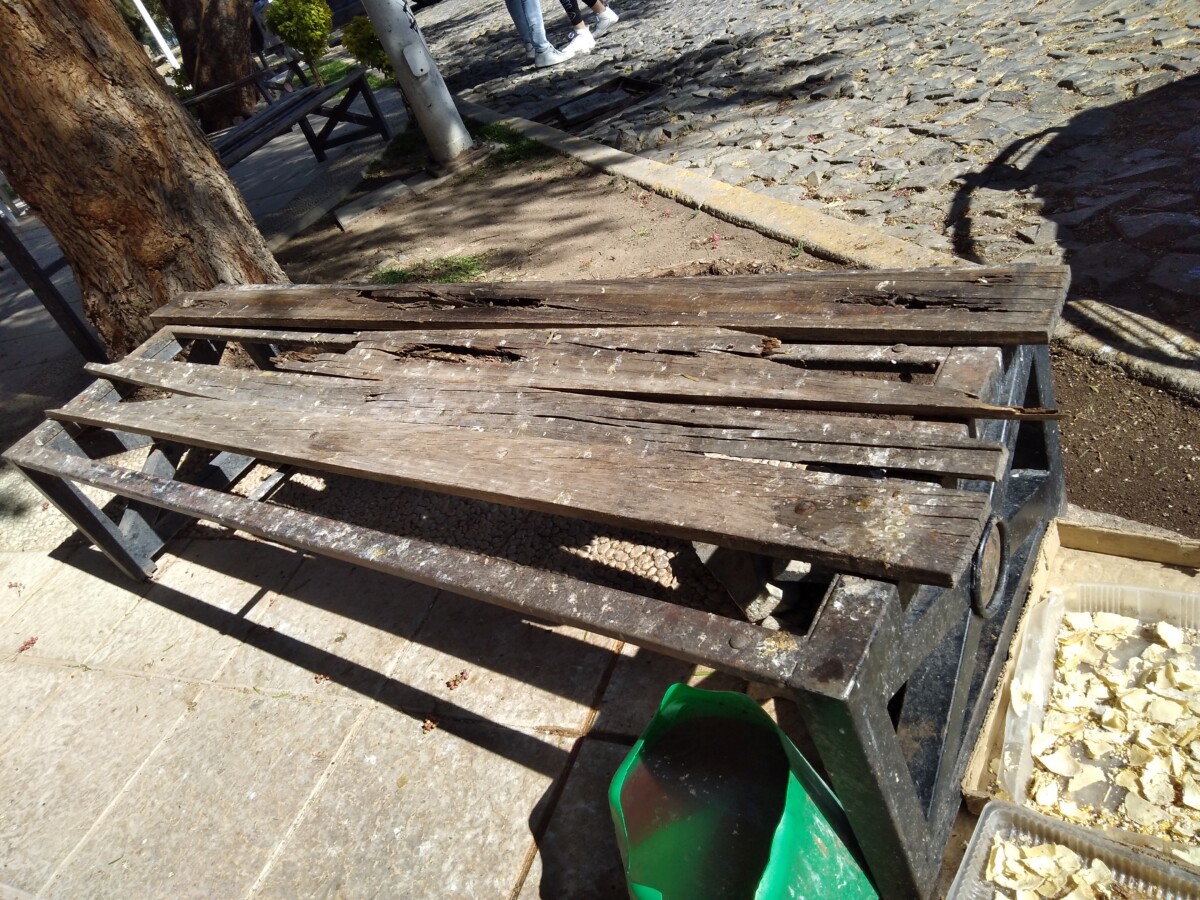
En las jardineras se observa más tierra que pasto y las bancas de madera y metal se encuentran en mal estado.
El proyecto de remodelación en el área de ‘Acapulquito’ ha estado parado desde que inició la administración 2021-2024, juzgó Juan, líder de los vendedores. Ya que, Juan se comunicó con diferentes funcionarios públicos para buscar el apoyo y reactivar la zona turística, sin tener éxito.
Dentro de los proyectos que Juan y los demás comerciantes presentaron, incluye la reparación del techo en lámina, resane y pintura del domo por ambos lados, estructura donde se encuentran los cuatro locales de artesanía y dos restaurantes pequeños al fondo. Así como, la reparación de las bancas y jardineras del pabellón.
Esto con la financiación de los mismos comerciantes, que calculan un gasto de cinco mil pesos en materiales por local, más un aproximado de tres mil pesos en mano de obra, según lo que ellos mismo no puedan hacer, afirmó el entrevistado.
Según Juan, para iniciar la primera fase de la remodelación antes mencionada, sólo se necesitan los permisos del Ayuntamiento, mismo que ha solicitado mediante la dirección de Mercados y Turismo, recibiendo «largas» como respuesta.
«Solo nos dicen que está en proceso», sin embargo, los comerciantes creen que las cosas más sencillas pueden resolverse de un día para otro. Un ejemplo, es la reparación de las bancas en mal estado, que ellos mismos pueden pintar y restaurar. O las jardineras, donde fue el mismo director de Parques y Jardines, José Luis Hernández García, quien prometió apoyar con la plantación de pasto y flora, pero tampoco regresó.
Uno de los conflictos que allí se presentó, es el uso y remodelación de los baños en ese módulo. Juan asegura que al inicio de la actual administración le retiraron las llaves de los mismos y los actuales encargados no se ven en la disponibilidad de apoyar el proyecto. Por su lado, los comerciantes ya consolidaron donar 600 pesos, extras por local, para su reparación al recibir el apoyo del Ayuntamiento.
Otras de las quejas fueron la falta de señalética y limpieza, ya que se llegaron a ver en la necesidad, más de una vez, de recoger escombros en la zona. Así como, la falta de iluminación en la misma, de casi 30 lámparas de alumbrado público, solo 11 funcionan correctamente.
Las últimas fases de este proyecto, que ya fue presentado a la directora de Turismo, Paola de Watterlot, tienen el objetivo de proyectar la zona turística de ‘Acapulquito’ a nivel estatal y nacional mediante programas de gobierno, como se llegó a hacer en la administración de Gerardo Degollado (2015-2018), agregó Juan, para lo que ya se realizaron reuniones entre vendedores, restauranteros y músicos interesados.
En la última reunión, hace aproximadamente un mes calculó Juan, se acordó producir un video publicitario, para ello la directora de Turismo prometió generar los recursos de producción, apoyándose en medios de comunicación locales, sin embargo, tampoco se ha recibido adelantos sobre este proyecto, afirmó el comerciante.
Hasta la fecha, «hice lo posible por comunicarme con los directores, pero no hemos recibido ningún apoyo, ni noticias; entonces, ¿con quién me tengo que dirigir?”, se pregunta Juan.
OPINIÓN: FACETAS DE MÉXICO
Se han tumbado más de 30 mil árboles y destruidos miles de refugios de vertebrados terrestres y aves nativas y migratorias. Foto: Cortesía.
Por: Pascacio Taboada Cortina/ Jorge Martínez Cedillo
Una de las obras “insignia” del gobierno de Andrés Manuel López Obrador, el Tren Maya, presenta una serie de obstáculos que permiten avizorar que su conclusión podría trascender su sexenio; hasta ahora, los responsables del proyecto están apanicados por múltiples ineficiencias, empezando por la ausencia de un estudio minucioso e integral sobre la ruta de 1,500 kilómetros de longitud. El deterioro irreversible del medio ambiente peninsular, constituye una de las preocupaciones principales de ecologistas, inversionistas hoteleros y habitantes en general.
Igualmente, la falta de conciliación entre directivos del proyecto y habitantes de comunidades rurales y urbanas de los estados de Campeche, Yucatán y Quintana Roo, es motivo de total preocupación por acciones de despojo de tierras ejidales y comunales, así como de propiedades privadas, todas sin la seguridad de indemnización, frente a la decisión presidencial de “avanzar a como dé lugar y terminar la obra en tiempo y forma”, aunque eso implique trastocar derechos y violar leyes.
Un aspecto muy importante del proceso constructivo, se refiere a que, después de casi tres años transcurridos de este gobierno, se cambió la ruta de Cancún a Tulum.
La idea de cruzar la zona urbano-hotelera de Playa del Carmen a través de un tramo elevado que cubriera esa zona hotelera, se cambió totalmente –ahora la vía será sobre tierra firme—sin reparar en el origen de las inversiones, que es dinero de todos los mexicanos—para no partir de tajo esa zona de gran turismo. El criterio de hoteleros pesó sobre posibles riesgos de rutas elevadas, poniendo como ejemplo la Línea 12 del Metro de la Ciudad de México.
Otro aspecto de vital importancia es el monto de la inversión federal. Inicialmente se planteó un ejercicio presupuestal para el Tren Maya, del orden de 161 mil 356 millones de pesos. Con el correr del tiempo, el alza de costos de materiales por la inflación y ajuste presupuestal, sumado a la decisión del cambio de ruta, especialmente del trayecto de Cancún – Tulum, se dio un aumento de recursos fiscales hasta llegar a 200 mil millones de pesos. Esto, sin considerar “otras eventualidades”.
Todos estos vaivenes adversos en el desarrollo del proyecto Tren Maya, encargado desde su inicio al director del Fondo Nacional de Fomento al Turismo (FONATUR) Rogelio Jiménez Pons, destituido casi tres años después por acuerdo presidencial. Esto, “debido a un bajo ritmo de trabajo y poca capacidad para avanzar a como diera lugar” en esa construcción. A partir de los primeros días de enero de 2022, fue sustituido por Javier May, quien había fungido como secretario de Bienestar.
En gira de supervisión reciente por la península de Yucatán, López Obrador afirmó ufano que, una parte importante del trayecto del Tren Maya, de Escárcega, Campeche, a Tulum, Quintana Roo, “estará a cargo de los ingenieros militares, una vez que se concluya el Aeropuerto Felipe Ángeles” en el estado de México.
En tanto, Javier May se ha dado a la tarea de “enderezar entuertos” y anuncia que la ruta del Tren Maya, en el tramo Cancún – Tulum “no pasará por ninguna zona urbana y que su edificación será ahora a nivel de tierra”. Se decidió el “cambio de trazo”, dijo, y se evitará afectar a la zona hotelera y urbana de Playa del Carmen. Esta fue propuesta de los empresarios hoteleros.
No deja de preocupar a técnicos y científicos por mantener y mejorar la ecología y el medio ambiente de la península de Yucatán, especialmente por su vulnerabilidad a todo lo largo del trayecto del Tren Maya. Las condiciones de su vegetación y de la conformación geológica de su superficie, así como de su potencial hidráulico subterráneo, seguramente serán alterados.
Como es sabido, los tres estados que conforman la península de Yucatán, no cuentan con ríos superficiales, salvo la parte sur de Campeche, donde navegan los ríos Champotón y Candelaria, así como manglares y lagunas. En todo el resto de la península, el potencial de agua es subterráneo. Se intercomunica a través de depósitos llamados cenotes, mismos que corren riesgos de fractura por la construcción de una vía terrestre considerada extraña.
A esta modificación ecológica subterránea, habría que añadir que se espera un cambio de la ecología superficial, es decir, de la selva de toda la región o, para ser propios, de la península yucateca. Por principio, ha trascendido que los responsables de la construcción del señalado tren, han tumbado cerca de 30 mil árboles de diferentes especies vegetales, y destruidos miles de refugios de vertebrados terrestres y aves nativas y migratorias.
Al respecto, algunos trabajadores “acarreados de otras zonas ex profeso para librar la ruta del tren”, han señalado que miles de árboles arrancados, se sembraron en otras zonas. Sin embargo, reportajes televisivos y diarios de la región, muestran que, efectivamente, resembraron árboles, pero todos se secaron. Es obvio que, si fueron arrancados, sus raíces profundas se cortaron. Ya no hubo retoño.
Esta es una brevísima idea de lo que ha sido la construcción de un Tren Maya que augura discusiones y polémicas de todo tipo durante largo tiempo. Por ahora, quienes estamos en contra de “un desastre ecológico”, notamos y anotamos el riesgo; los que están a favor, no disfrutarán una idea que surgió de una cabeza fuera de contexto.
Ojalá el culpable de la “idea” haya sido de parte de un fulano llamado Rogelio Jiménez Pons que, en estos momentos, descansa y disfruta en un sillón su calidad de subsecretario de Comunicaciones y Transportes, dando gracias al Creador por no tener que justificar miles de millones de pesos ante la Auditoría Superior de la Federación. Bueno, ahí no pararía el asunto.
Lake Day passes unnoticed in Chapala
Lake Chapala. Photo: Arturo Ortega.
Commemoration of the State Day of Lake Chapala on February 2 went unnoticed by the community’s residents this year. Despite being an official decree since 2014, authorities at both the municipal and state levels of government appear to have abandoned the State Day of Lake Chapala.
Originally, the State Day sought to highlight the importance of the lake for the residents of Lakeside and of Jalisco, as well as constituting another layer of protection and conservation for the Lake.
«It is the obligation of the municipalities, in coordination with the Executive Branch of the entity, to celebrate the State Day of Lake Chapala through activities that enrich the knowledge, awareness of the protection and importance of the place through strategies, mechanism and actions necessary to bring to fruition the festivities of that day,» states the 2014 decree.
The law was presented by the local deputy of the 17th district, Jesús Palos Vaca of the Ecologist Green Party of Mexico (PVEM) and neighbor of Jocotepec. The initiative was published in the Official Newspaper of the State of Jalisco in December 2014.
This State Day was enacted when Lake Chapala and its 114,659 hectares was named as a Ramsar Site on February 2, 2009, joining a list of wetlands of international importance under UNESCO’s Convention on Wetlands.
Translated by MaryAnne Marble
Juan José Ramírez Campos highlights his 20-year career with music
Ramirez Campos performing. Photo: Héctor Ruíz
Héctor Ruíz.– To mark his 20-year career as a singer-songwriter, Juan José Ramírez Campos, who is also known for serving as trustee and twice interim president in the past administration (2018-2021), appeared on January 28 at the Casa de la Cultura José Vaca Flores in Jocotepec, where he performed his most popular songs, such as Jocotepec Mágico.
Translated by Rebecca Zittle
Magic Town funding for Ajijic expected to arrive in March
Ajijic is a Pueblo Mágico not only because of its traditions, but also its urban art, like this sculpture of Tlaloc (the god of rain) by the artist Antonio López Vega, located in the Ajijic plaza.
Sofía Medeles – According to Pilar Posada, regional delegate of the Chapala Lakeside, the state government will make the distribution in March of the 15 million pesos budgeted for the Pueblos Mágicos or Magic Towns of Jalisco, among them Ajijic.
Posada said that although the budget is already established, funds will not arrive until approximately March, due to changes in the administration of the Ministry of Tourism of the State of Jalisco, as well as changes in the rules of operation of the program. The Magic Town program stopped receiving Federal Funding in 2019.
Elizabeth Oropeza Silva, Social Communication Director of the Municipality of Chapala, commented that neither the direction of Tourism nor the Treasury have received notification about the budget that would be designated to Ajijic by the state government.
Last year, the budget given by the state government to the Magic Towns was divided in equal parts, allocating 1,333,000 pesos to each of the nine Magic Towns which are: Tapalpa, Mazamitla, Lagos de Moreno, Mascota, San Sebastián del Oeste, Talpa de Allende, Tequila, San Pedro Tlaquepaque and the most recent, Ajijic.
Translated by Sandy Britton
Citizen complaint prevents encroachment into Lake Chapala
The structure that was intended to be a pérgola for the restaurant.
Sofía Medeles (Ajijic, Jal). – On February 1 Ajijic residents reported an illegal gazebo that the Bonanza restaurant had just placed on public property on the Lakeshore, generating a quick response by the authorities who ordered it removed.
The complaint was generated by a member of the group «Pueblos Unidos de la Ribera» and the activist of Ajijic, Sinuhé León, who publicized the placement of a wooden frame in front of the dock, a site known by the Ajijitecos as «la vieja posada» (the old inn) through social networks.
Sinuhé León also contacted the Ajijic town office manager, Maximiliano Macías Arceo, who quickly contacted the manager of the business, as well as the inspectors of the Regulations Department of Chapala, who resolved the complaint that same day, ordering the removal of the pérgola.
Inspectors Julio César Sotelo Beltrán, Irving Cortés and Sergio Real arrived in the area and asked the restaurant administrators to immediately remove the wooden structure as well as to make modifications to the floor to leave some boxes for the roots of each tree.
«Permission was not requested to place (the structure) and, in this case, the natural flora also intervened because of the trees. Today it has to be removed», said Julio César, adding that these types of irregularities are dealt with in coordination with other agencies such as Padrón y Licencias, Ecología, Obras Públicas and Desarrollo Urbano.
For her part, the owner of the restaurant, Laura Jiménez de Beltrán, said she did not intend to gaining land in the Federal zone, so removing the gazebo did not bother or affect them and that, because she understood the space in front of her restaurant, as well as those on one side, are for pedestrian passage, since it is considered a sidewalk.
«Our intention was not bad; on the contrary, with this business we stimulate local commerce, jobs for the residents and attracting tourists. We want to tell the people that we are not here to steal and that this part of this restaurant and the ones nearby, is still a sidewalk, and if we get permits to put tables outside, everything will be with licenses and the passage will never be closed», commented the restaurateur.
Likewise, Sotelo Beltrán, said that her work in the Federal spaces is done in conjunction with the municipal legal department, carrying out inspections and taking time to act in conjunction with the agencies that are responsible, in this case, the National Water Commission (CONAGUA).
The Acting Delegado, Maximiliano Macías, commented that it was a citizen’s complaint, which he appreciated, since he said that there are times when people do not realize the things that happen. He added that the manager of the business claimed to have no knowledge that the license was necessary, but did not put up any resistance when he received the orders from the regulations.
Translated Patrick O’Heffernan
© 2016. Todos los derechos reservados. Semanario de la Ribera de Chapala
